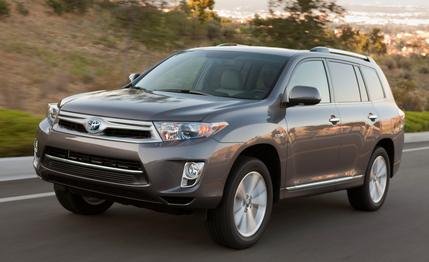 Short Take Road Test
Short Take Road Test
Despite the return of $4-per-gallon gas and the ongoing maturation of small cars in the U.S., Americans still want and occasionally need large vehicles. The seven-passenger Toyota Highlander hybrid was one of the first crossovers to balance suburban practicality with electrified efficiency when it debuted in 2006, and a thorough redesign for 2008 strengthened the overall package.
For 2011, a modest face lift better distinguishes the Highlander’s hybrid calling, and a larger V-6 engine offers the tandem benefits of more fossil-fueled grunt and improved fuel-economy estimates.
The Basics
The substitution of Toyota’s ubiquitous 3.5-liter V-6 for the previous 3.3-liter is the most noteworthy change for 2011, bringing the Highlander hybrid up to spec with the Lexus RX450h. With 231 hp and 215 lb-ft of torque (versus the RX’s 245 hp and 234 lb-ft,) the V-6 is joined at the front axle by a 167-hp electric motor. A 68-hp motor at the rear axle provides on-demand all-wheel traction, with both motors sourcing juice from a nickel-metal hydride battery. The combined output is 280 hp, 10 more than the regular Highlander’s 3.5-liter V-6, but 15 fewer than the RX450h’s total.
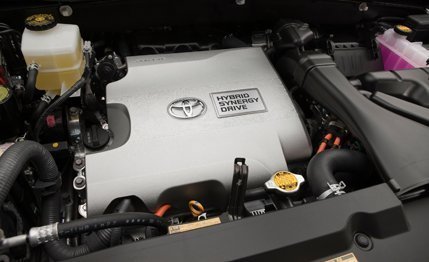
As in the RX hybrid, a continuously variable transmission transfers power to the wheels while removing any enjoyment from the driving experience. It’s sluggish and causes the engine to drone under acceleration. Although city and highway fuel-economy ratings of 28 and 28 mpg are up from last year’s 27/25 figures, we managed 22 mpg over 800 miles of mixed driving—a mere 1 mpg better than the last Highlander V-6 we tested—making us think upping the battery capacity would have been a better strategy than switching to the larger V-6. (We managed 25 mpg in a similarly rated, all-wheel-drive RX450h.)
Also new for 2011 are a revised grille and front bumper unique to the hybrid, blue-tinted lenses for the projector-beam headlights, and body-color rocker panels with chrome accents. As a result, the hybrid’s lines are cleaner than the standard Highlander’s, and the hybrid provides a slight visual return on your investment, although it remains stealthy enough to get lost in the Whole Foods parking lot.
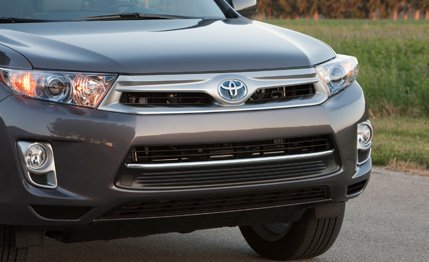
Putting It All to Work
The 4815-pound crossover’s performance was a touch inconspicuous, though. This Highlander scooted to 60 mph in 7.3 seconds and tripped the quarter-mile lights in 15.2 seconds at 92 mph—comparable to the last V-6 model we tested, which finished midpack in a six-vehicle comparison test. Its 181-foot stop from 70 mph is solid for this size class, although 0.74 g on the skidpad is somewhat lacking. Nineteen-inch wheels—standard on Limited trims and a $1020 option on the base model—may have helped the skidpad figure a touch but wouldn’t have done much about the considerable understeer and body roll we noted.
Given its mission, however, the Highlander hybrid’s ride quality is decent if a little choppy and underdamped, and the lack of lateral support in the front seats isn’t an issue at suburban speeds. The switch between electric and internal-combustion power is nearly seamless, usually necessitating a glance at the dash-mounted power meter/trip computer to see what the V-6 is (or is not) doing. As with most hybrids, the regenerative brakes are grabby, and the electric power steering offers zero feedback or buildup off-center.
Toggling the EV button on the center console allows for low-speed, short-distance travel on electricity alone, but it’s more gimmick than useful electric-vehicle operation. Like those in most other hybrids, the electric-propulsion system in the Highlander is really only intended to augment the gas engine. If the driver more than breathes on the throttle or exceeds 15 mph, especially in cold weather and with the accessories whirring, the Highlander will go back to emptying its 17-gallon fuel tank.
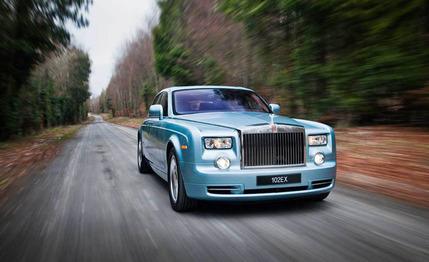
Inner Workings
Although a low-res infotainment interface and some hard, cheap-looking plastics dot the cabin, the hybrid offers numerous standard amenities for the modern family, including electronic driver aids galore, a six-speaker audio system with Bluetooth, a rearview camera, a stowable second-row center console, and seven airbags, including one for the driver’s knees. Three rows of seats, including a generous sliding and reclining middle bench, are standard. The third row is a 50/50-folding setup that offers much more space than the first-gen Highlander’s. Two adults will fit in the way back for short hauls, provided the middle row isn’t reclined, but you’d better pack light, because that leaves only 10 cubic feet of cargo space. The rearmost chairs fold and slide easily, upping the figure to a respectable 42 cubes, with 94 cubic feet available if the second row is stowed flat.
At $38,300 to start (a $2600 increase from 2010), the Highlander hybrid is pricey, commanding a $7000-plus premium over a standard four-wheel-drive model without the extra electrons. Swelling our tester’s bottom line to Lexus levels were more than $8500 in options, including a rear-seat entertainment system ($1660), a leather package that netted a power sunroof and steering-wheel audio controls ($2650), and an infotainment upgrade that included touchscreen navigation, iPod/USB connectivity, and a premium nine-speaker JBL stereo ($2650). Running boards ($649), a power liftgate ($400), carpeted floor and cargo mats ($275), and various other extras pushed our example’s as-tested figure to a heady $47,042. That’s serious money.
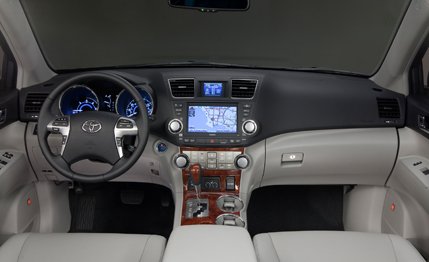
The Hybrid Mystique
Like any hybrid’s, the Highlander’s fuel economy will vary depending on—among other things—how often you’re stuck in stop-and-go gridlock and other situations in which the battery and regenerative braking pay larger dividends. Yet even accounting for highway running, our observed figure is only slightly better than that of most comparable three-row crossovers: a small return on a considerable investment.
Placing a value on good citizenship is murkier still, considering the politically and morally questionable sourcing of elements necessary for the hybrid’s battery pack. It’s likely that Highlander hybrid buyers will weigh their peace of mind—real or imagined—with Mother Earth before signing up, but this is one hybrid that lightens your wallet more than your carbon footprint.